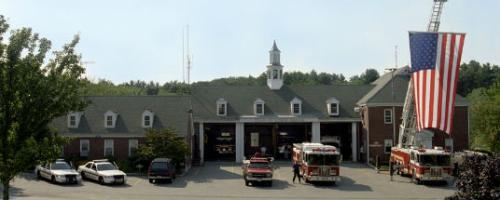PFAS in Drinking Water
PFAS in Drinking Water
There has been much information in the news recently concerning PFAS in public water supplies. PFAS have been linked to low infant birth weights, kidney cancer and other health effects.
North Reading tested for PFAS in 2014 and 2015 and did not detect these substances in the water from the North Reading wells or in the water supplied by Andover at that time. North Reading is in the process of resampling and retesting for these substances.
What are PFAS and where do they come from?
PFAS is the short name for Per- and PolyFluoroAlkyl Substances, used to describe six chemical compounds:
Perfluoro-1-octanesulfonate (PFOS)
Perfluoro-n-octanoic Acid (PFOA)
Perfluoro-n-heptanoic Acid (PFHpA)
Perfluoro-n-nonanoic Acid (PFNA)
Perfluoro-1-hexanesulfonate (PFHxS)
Perfluoro-1-butanesulfonate (PFBS)
PFAS are manmade chemicals first developed in the 1940s. In the 1950s, manufacturers began using PFOS and PFOA for their ability to repel water, protect surfaces and resist heat, among other applications. Common uses were as carpet and fabric protectants (Scotchgard prior to 2001 – PFOS) and in non-stick cookware (Teflon was manufactured prior to 2013 using PFAS). In the 1960s, the US Navy developed firefighting foams containing PFAS.
How do PFAS end up in drinking water?
PFAS can enter the drinking water when there is a potential source of PFAS contamination in the vicinity of the water supply source. Some sources associated with PFAS contamination include:
Airfields
Fire Training Areas
Manufacturing Facilities
Waste Disposal Sites
Landfills
PFAS are known as “forever chemicals” as they are resistant to natural breakdown in the environment. For example, the fibers of a piece of carpet disposed of in a landfill will break down, but the PFAS sprayed on the carpet will remain. These chemicals can then migrate to groundwater and surface waters.
What are considered to be acceptable levels of PFAS in Drinking Water?
The Environmental Protection Agency (USEPA), under the Safe Drinking Water Act, establishes Maximum Contaminant Levels (MCLs) for drinking water contaminants, designed to minimize negative health effects from a lifetime of water consumption. There is currently no MCL for PFAS, and no sampling requirement for PFAS in drinking water.
In 2016, the USEPA In 2016 the USEPA established a lifetime Health Advisory for drinking water of 70 parts per trillion (ppt) for any combination of PFOS and PFOA. In June 2018 the Massachusetts Department of Environmental Protection (MassDEP) issued a public health guideline of 70 ppt for any combination of PFOS, PFOA, PHFpA, PFNA and PFHxS. In April, 2019 the MassDEP initiated the process to develop a Drinking Water MCL for the sum of the six PFAS.
Has North Reading tested for PFAS in our drinking water?
Under the Unregulated Contaminant Monitoring Rule (UCMR-3), all Public Water Systems serving more than 10,000 persons collected samples for PFAS. North Reading sampled our sources (wells) along with water supplied by Andover in 2014 and 2015 for the six PFAS compounds. Sample results at that time all came back with a result of ND (Not Detected) for each of the six PFAS compounds at all of the sources sampled.
Note – the analytical methodologies used in this sampling had reporting limits that are higher than the standards now being considered. North Reading has collected additional samples to be analyzed to the new recommended standards, and anticipates having results from these samples in December.
For additional information on PFAS, click here for the USEPA Fact Sheet on PFAS, and click here for the Massachusetts Department of Public Health Fact Sheet on PFAS.










